Be aware › Skunks
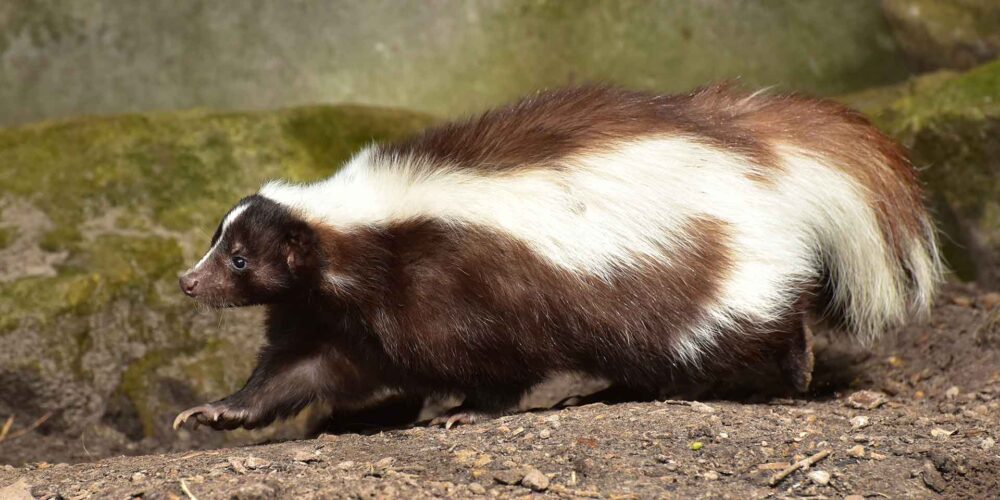
Skunks are easily identified by their black and white markings. Utah has two species of skunks, the western spotted skunk, Spilogale gracilis, and the striped skunk, Mephitis mephitis. Spotted skunk adults weigh 2–4 pounds, and striped skunks weigh 6–10 pounds.
Each species has scent glands, which produce a thick, oily and odorous fluid called musk. Skunks use this scent to mark territories and to ward off predators. The musk spray, containing an irritating sulfur compound, is ejected from glands near the rectum. The spray can disperse up to 15 feet. Usually this defense is a last resort. Typically a skunk will warn its enemies first by fluffing its fur, shaking its tail, stamping the ground and squeaking or growling.
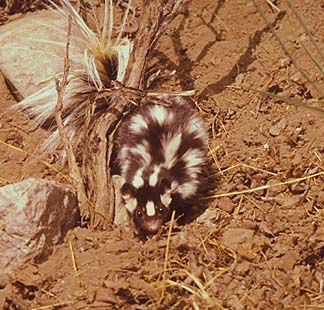
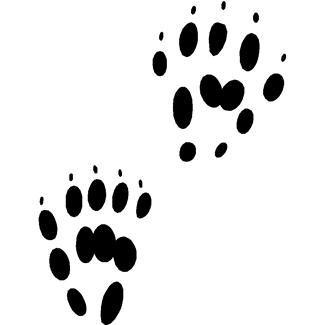
Western spotted skunk tracks are approximately 1½ inches long.
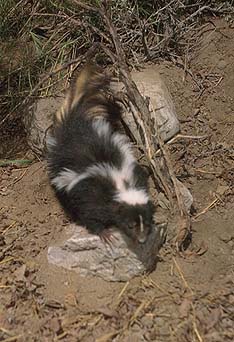
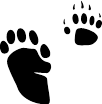
Striped skunk tracks are approximately also 1½ inches long.
Skunks can be found throughout Utah in wooded areas, grasslands and even in urban areas. They eat small birds, eggs, rodents, insects, reptiles, and fruits. Breeding occurs in late fall and early winter with a litter of young born in the spring. Skunks are mainly solitary, nocturnal animals and are active throughout the year.
Legal status
Spotted skunks are protected and classed as furbearers and are managed with regulated trapping seasons. Striped skunks can be taken year-round without a license.
Avoiding Conflicts
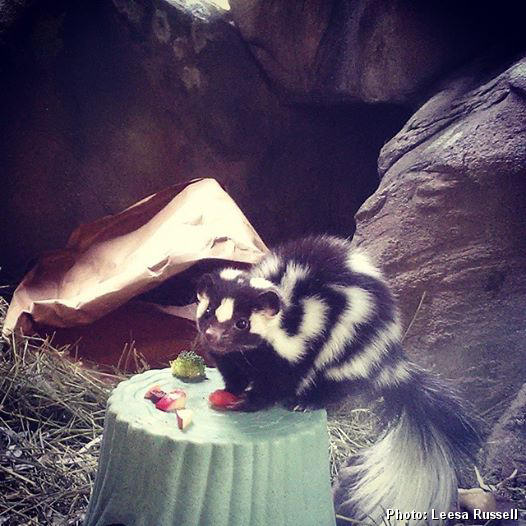
Conflicts may arise when skunks seek out food and shelter near human development. Skunks may prey on small pets and poultry. Working together with neighbors to eliminate attractants can be the best way to avoid conflicts with skunks.
Remove attractants
- Place bird feeders out of the reach of skunks and keep fallen seed picked up.
- Do not leave pet food and water dishes outside.
- Keep trash in locked or weighed down containers and put it out on the morning of pick-up.
Skunks under a building
- Cover window wells. Skunks can fall into the wells and become trapped. If this happens, slowly place a long, thick, rough board into the well to allow the skunk to climb out on its own.
- Use wildlife-safe, non-toxic insecticides to control grubs on your property, a food source for skunks, which may result in them digging up lawns.
- Eliminate potential den sites by closing off old buildings, culverts, irrigation pipes and brush piles.
- Use mothballs, naphthalene flakes, or paradichlorobenzene crystals as repellants. Rags soaked with ammonia have also been reported to be effective repellents.
- Close off holes in foundations and porches with wire mesh that extends at least 10 inches underground. Place flour outside the hole and look for tracks indicating the skunk has excited before sealing up the hole.
- A 2-foot wire mesh with the bottom 6 inches bent out at a 90-degree angle and buried at a depth of 6 inches will prevent skunks from digging underneath buildings.
Pets and poultry
Skunks are not good climbers, but can still go over small obstacles and dig under fences.
- Keep poultry in secure coops at night.
- Install 4–6 foot widths of wire mesh fencing to fence poultry yards. The bottom 6 inches of fencing should be bent outward at a 90-degree angle and buried to a depth of 6 inches to discourage skunks from digging under the fence.
- Vaccinate your pets and keep their shots up to date.
- Keep dogs and cats indoors at night.
- Do not allow pets to chase or “play” with skunks.
- If a pet is sprayed, wash the animal quickly with commercial products that are designed to eliminate skunk spray odor.
- If a pet is bitten, contact a veterinarian immediately.
If you encounter a skunk
- Do not feed or try to approach a skunk. Observe it from at least 20 feet away.
- If the skunk begins to show warning behaviors such as tail-lifting and stomping, leave the area slowly and quietly.
- If you are sprayed, flush your eyes and wash your skin with carbolic soap and water. Wash your clothes with vinegar.1
If you have problems that cannot be resolved by following these tips, please consult a professional, licensed animal control company.
References
- USU Coop. Ext. Wildlife Damage Management. Series

